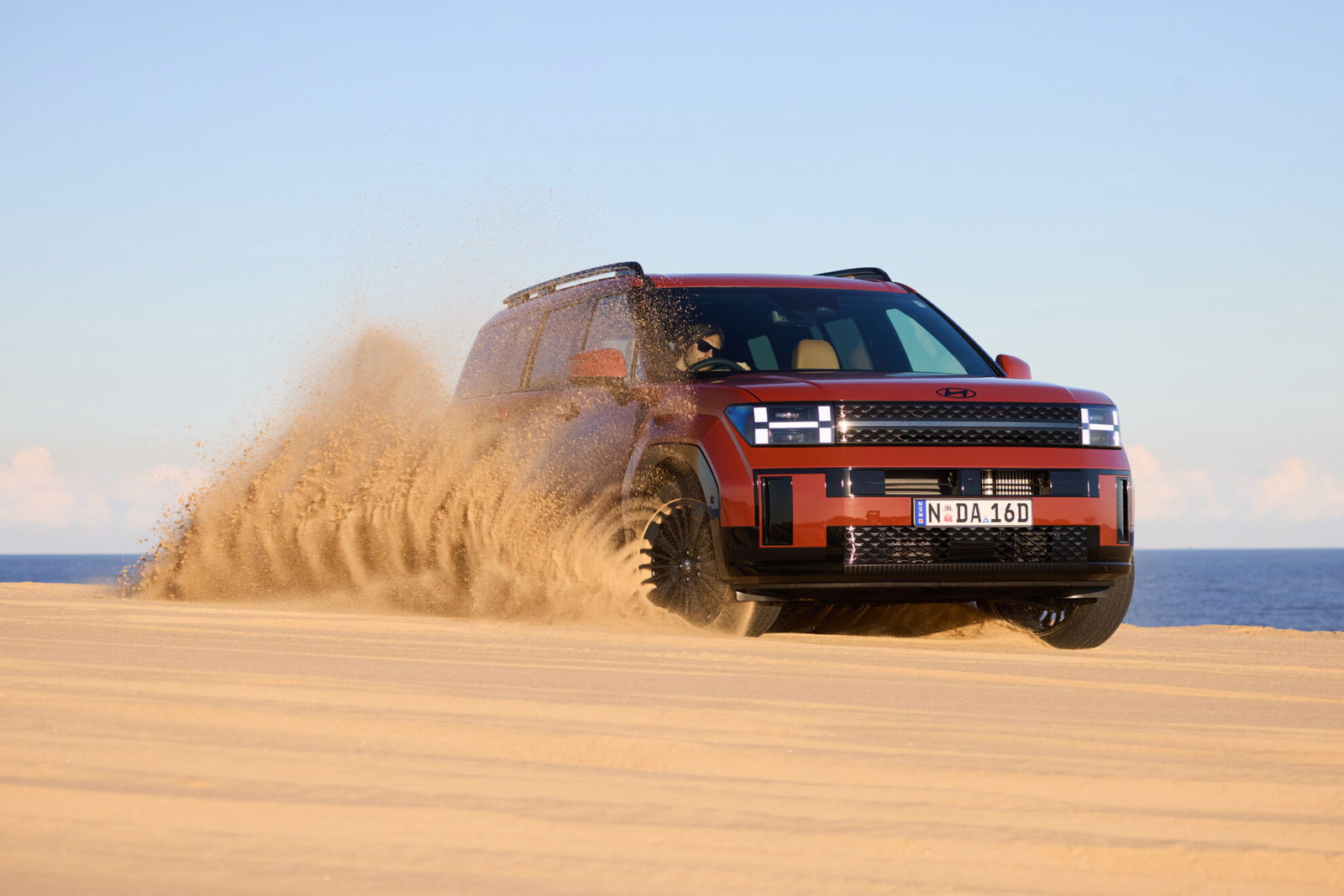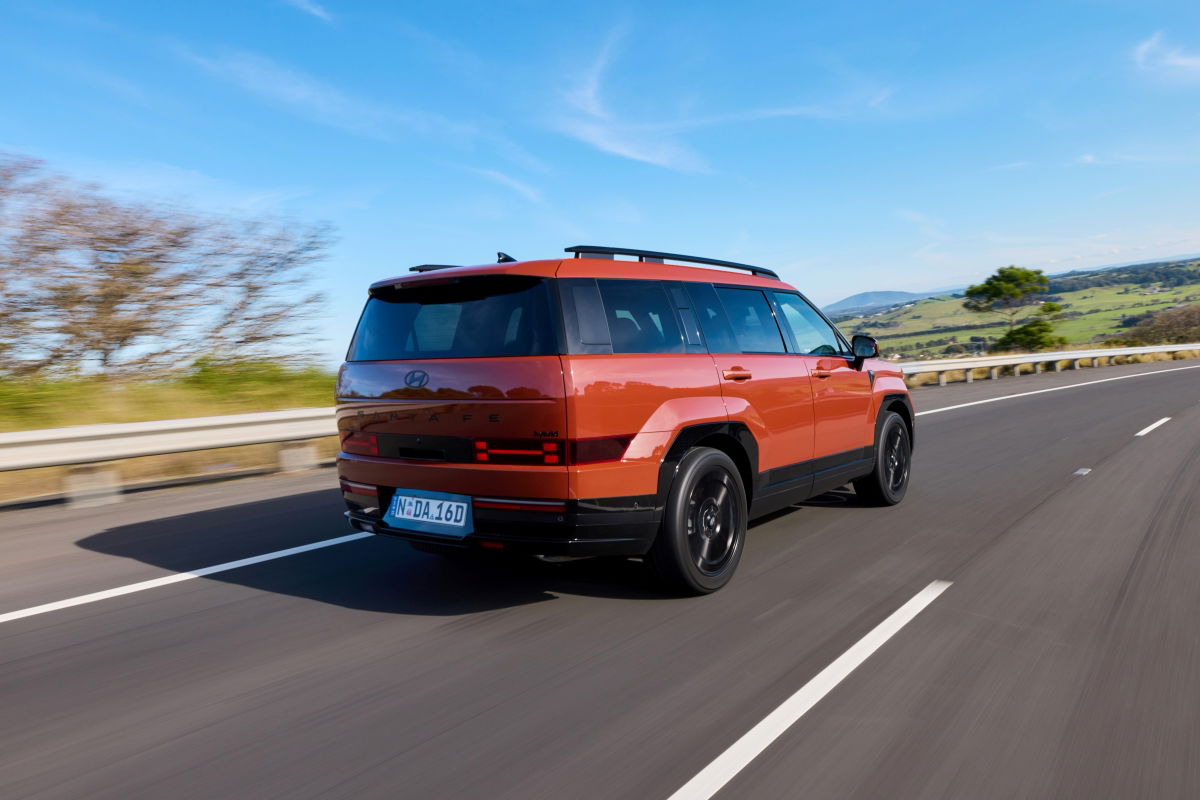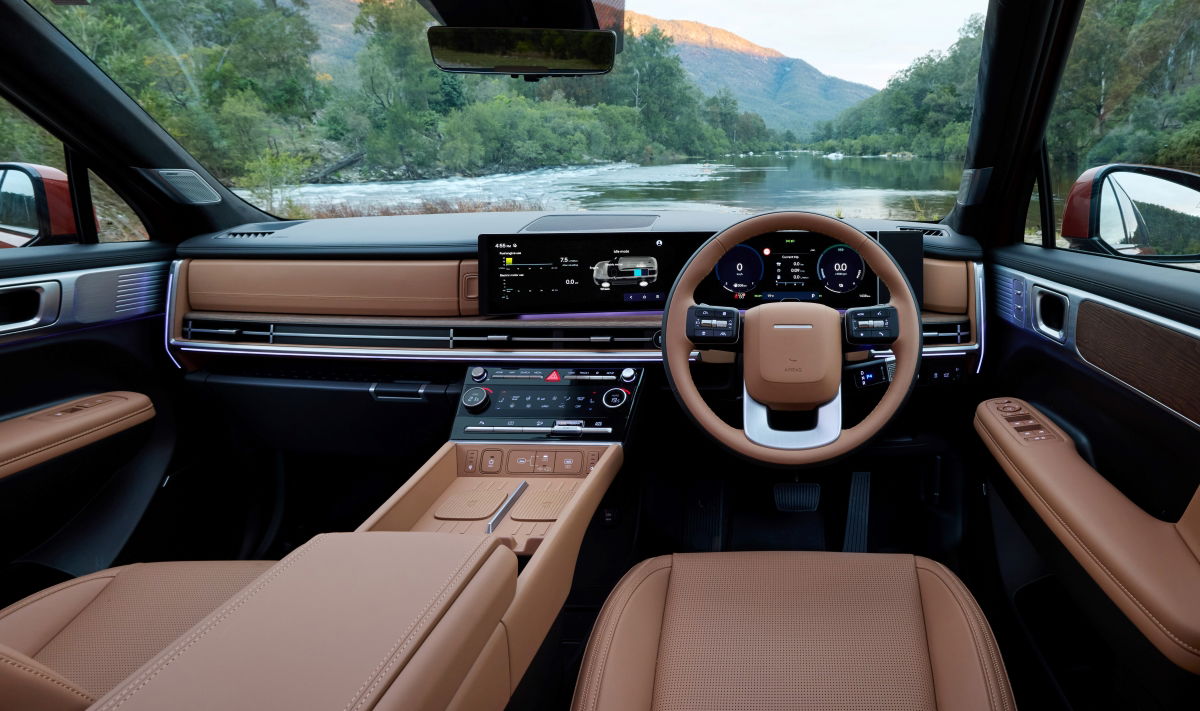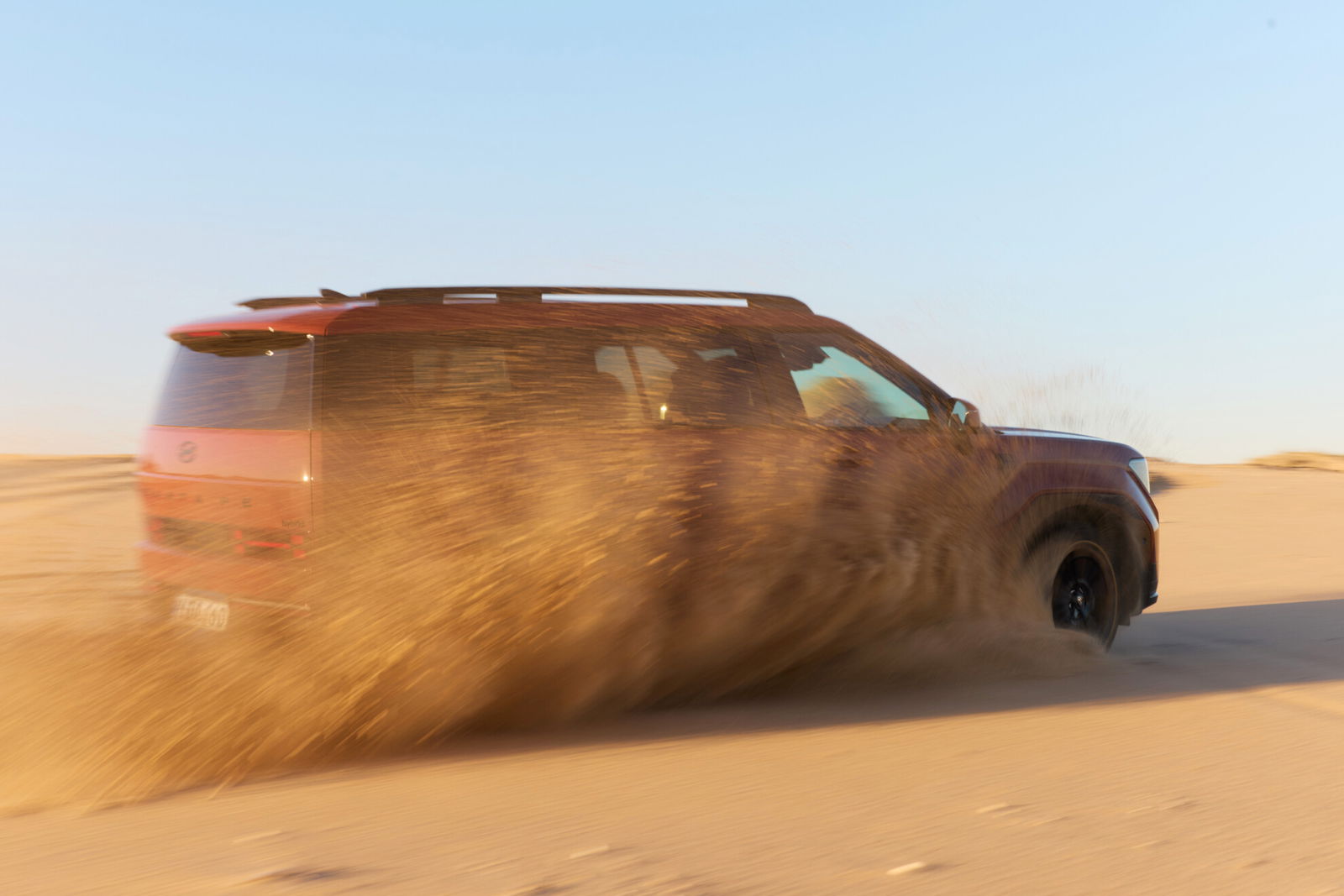
The newest addition to the Hyundai Santa Fe range doesn’t make sense.
When the company launched its new family-friendly SUV in 2024 we hailed it a ‘modern masterpiece’ for its bold design, excellent functionality and lengthy list of standard equipment. We also liked its hybrid powertrain, which combined a 1.6-litre four-cylinder turbocharged petrol engine with an electric motor to generate 172kW of power and 367Nm of torque. It offered adequate performance and returned just 5.6-litres per 100km on the fuel economy cycle.
It was, to be candid, the obvious engine choice for the Santa Fe, especially in this post-diesel world we live in now. However, Hyundai didn’t think so, and has added a second, very unlikely, powertrain option.

The new Santa Fe 2.5T is powered by the brand’s 2.5-litre turbocharged four-cylinder petrol engine, without any hybrid assistance. Thanks to that bigger capacity it makes more performance than the hybrid, 206kW and 422Nm, but also uses more fuel. And not just a little bit more, but 9.3L/100km, which is a huge jump up on the hybrid.
So, on paper, this new Santa Fe option doesn’t really make sense. A large SUV is not a performance car, so why would anyone choose it over the more fuel-efficient hybrid option?
Well, after a week behind the wheel I can understand why some will be wooed by its charms. The Santa Fe 2.5T surprises with its performance, it may not be a sporty SUV but the extra torque is really noticeable around town. As we said in our original review, the hybrid offers ‘more-than-adequate performance’ but the 2.5T is a noticeable step ahead.

The lack of a hybrid system makes it more linear in the way it delivers its performance too, which will appeal to some buyers. As will the simplicity of the system and the fact the fuel economy benefits of a hybrid are diminished the more you spend outside of stop-start traffic.
Put simply, the 2.5T will have appeal to those who live a more rural life compared to an urban lifestyle, with more time on the open road or freeway – rather than a suburban rat run, where the hybrid makes so much sense.
Like the hybrid, the 2.5T isn’t locally tuned but the ride and handling are still amongst the best-in-class, especially on an open road, where the Santa Fe offers good poise and feels in control all the time.

There is another reason to buy the Santa Fe 2.5T over the hybrid – it’s cheaper. Across the range, with the 2.5T available in base, Elite and Calligraphy trims, the new engine option is $2500 cheaper. It’s not a huge difference, but less is less.
We tested the 2.5T Calligraphy and were reminded about just how generously equipped the flagship variant is for $72,500 (plus on-roads).
The list of standard features is extensive but includes two unique exterior colours (Creamy White and Earthy Brass) plus a ‘blacked-out treatment’ for the wheels, mirrors, etc to ensure it stands out against the Elite and standard Santa Fe. Other goodies include leather-trimmed seats, two wireless device chargers and Captain’s chairs in the middle row.
While it still makes the most sense for those in the market for a plush family SUV to opt for the Santa Fe Hybrid, the new 2.5T will expand the car’s appeal to those who prefer more power and less complication.













Discussion about this post